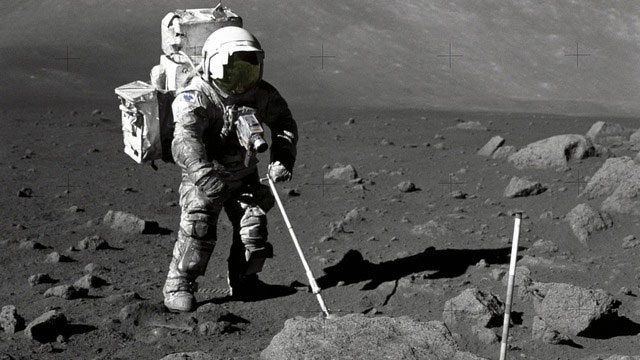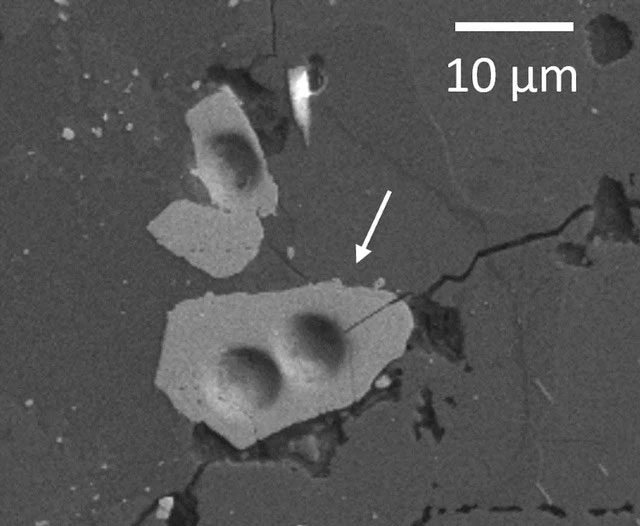A new technology has enabled scientists to gain deeper insights into the dating of components in lunar soil samples brought back by a U.S. spacecraft over half a century ago.
CNN reported on October 24 that scientists have discovered that the age of the Moon is now estimated to be 40 million years older than previously thought, following an analysis of dust samples collected by Apollo 17 astronauts in the 1970s.

Astronaut Harrison Schmitt collecting lunar soil samples in 1972. (Photo: NASA).
Upon landing on the Moon on December 11, 1972, astronauts Eugene Cernan and Harrison Schmitt from the National Aeronautics and Space Administration (NASA) collected dust and rock samples from the surface.
A recent analysis of these samples has identified zircon crystals (ZrSiO4) and dated them to be 4.46 billion years old.
“These crystals are the oldest solids formed after a major impact. By determining the age of these crystals, we establish an anchor for the age of the Moon,” said Philipp Heck from the Field Museum of Natural History in Illinois, USA.
In the early days, when the Earth was still forming and growing in size, the solar system was highly chaotic, with rocky objects frequently colliding in space.

Magnified zircon crystals under a microscope. (Photo: NASA).
According to researchers, over 4 billion years ago, an object the size of Mars collided with the Earth, ejecting a large mass of rock that became the Moon. However, scientists have faced challenges in accurately dating this significant event.
The energy from the impact of the Mars-sized object melted the rock, which helped shape the Moon’s surface.
“When the surface was molten, zircon crystals could not form and survive. Therefore, any crystals on the Moon’s surface must have formed after this lunar magma ocean cooled,” Heck explained.
Previous research by Bidong Zhang at the University of California, Los Angeles, a co-author of the study, suggested that determining the age of the crystals in the collected dust could reveal the true age of the Moon.
The research team examined the crystals at the nanoscale using advanced techniques to determine their chemical composition and ascertain the Moon’s age.
Heck reiterated that the Moon is a crucial component of our planetary system, helping to stabilize Earth’s rotational axis, resulting in a 24-hour day and contributing to tides.
“Without the Moon, life on Earth would be different. It is part of the natural system we seek to understand more deeply, and our research provides a small piece of the larger picture,” he noted.


















































